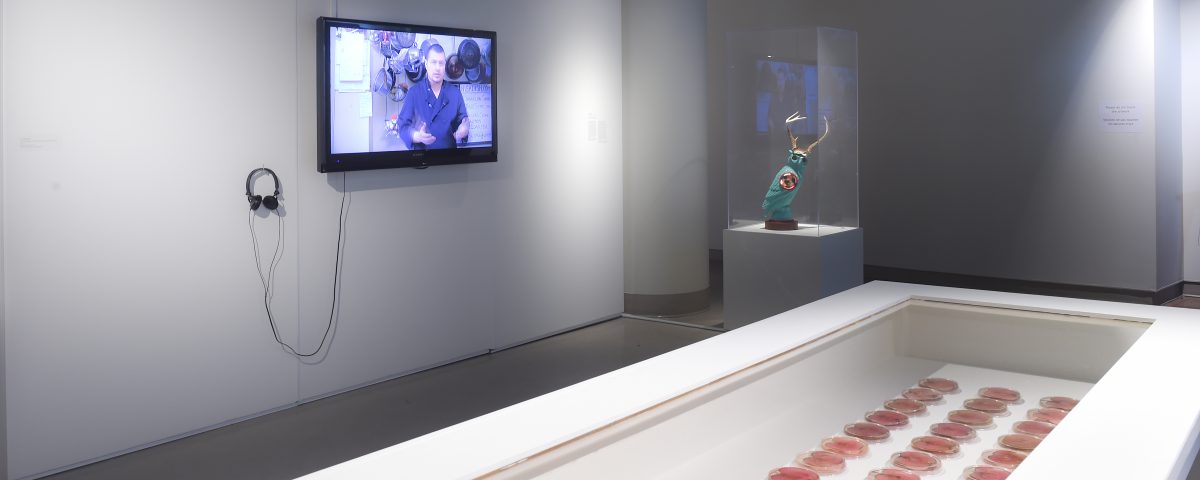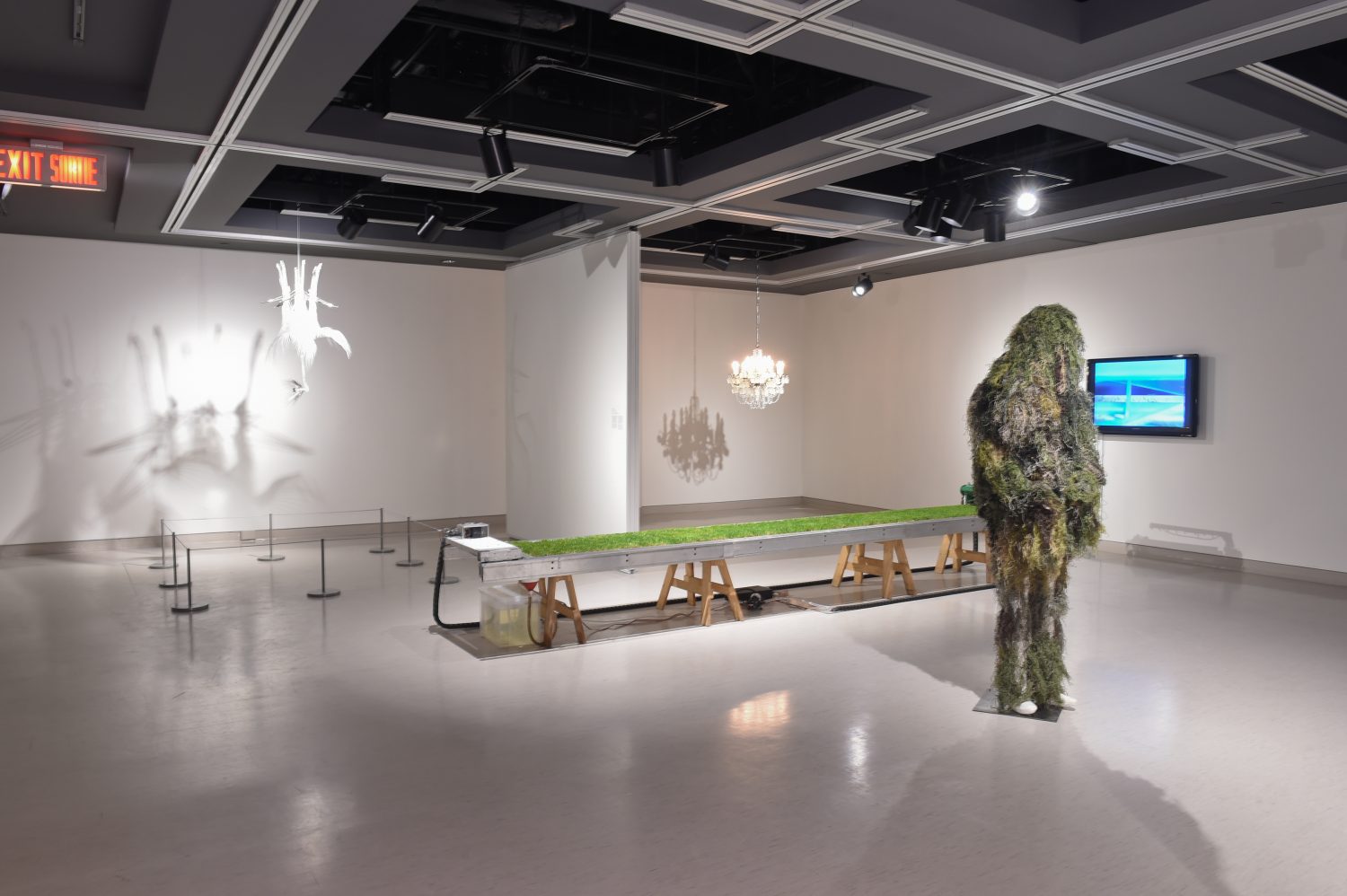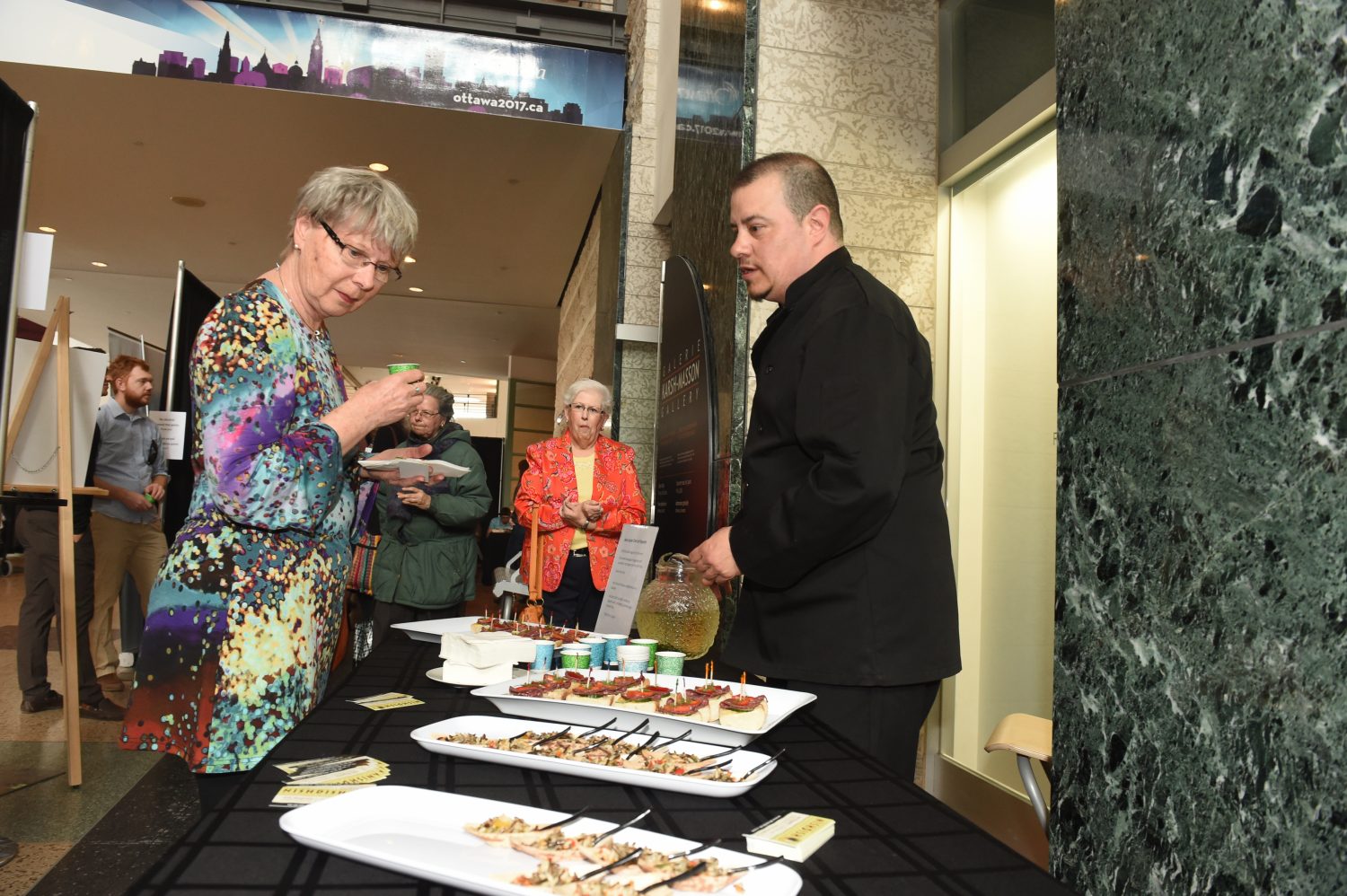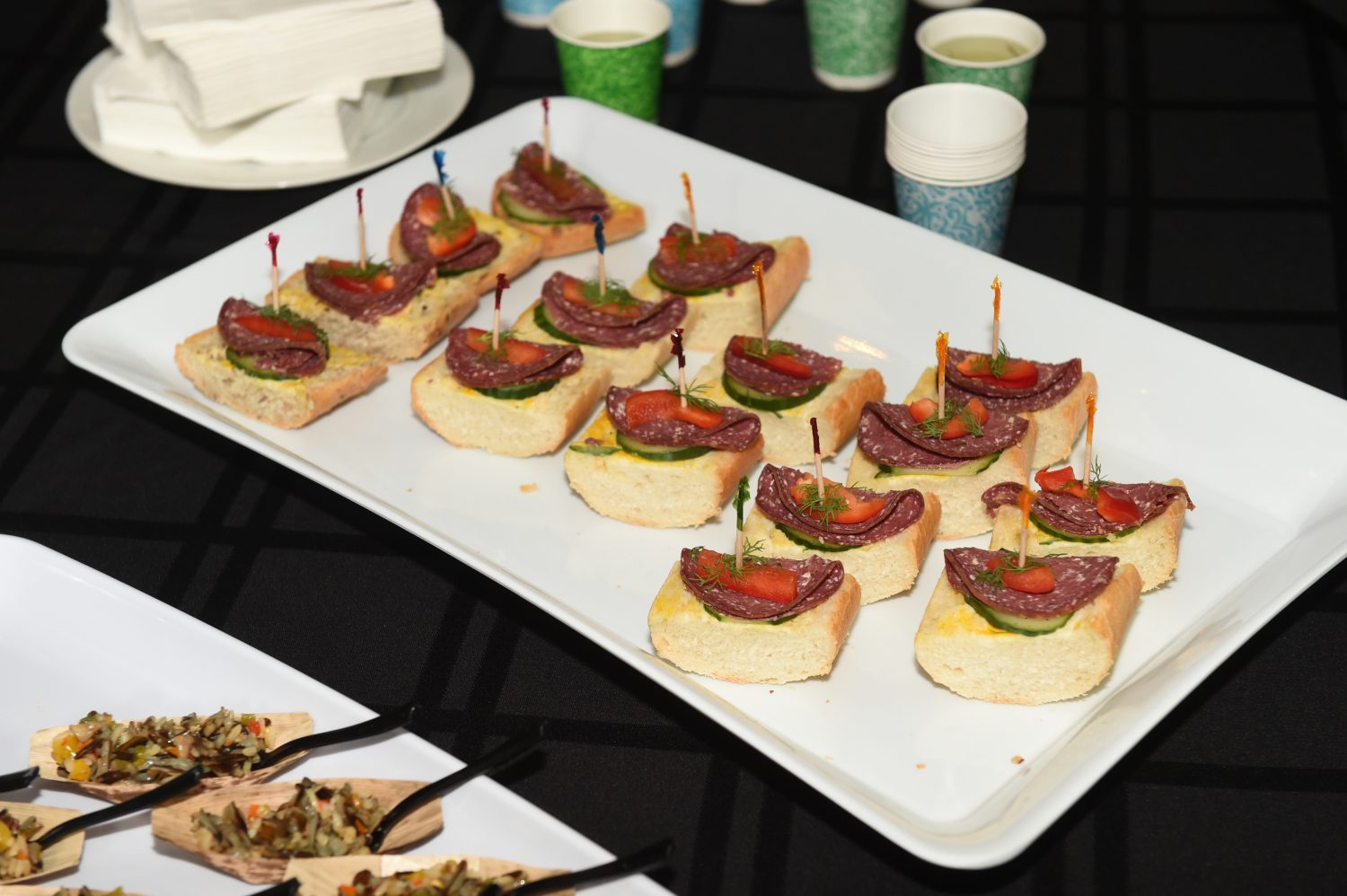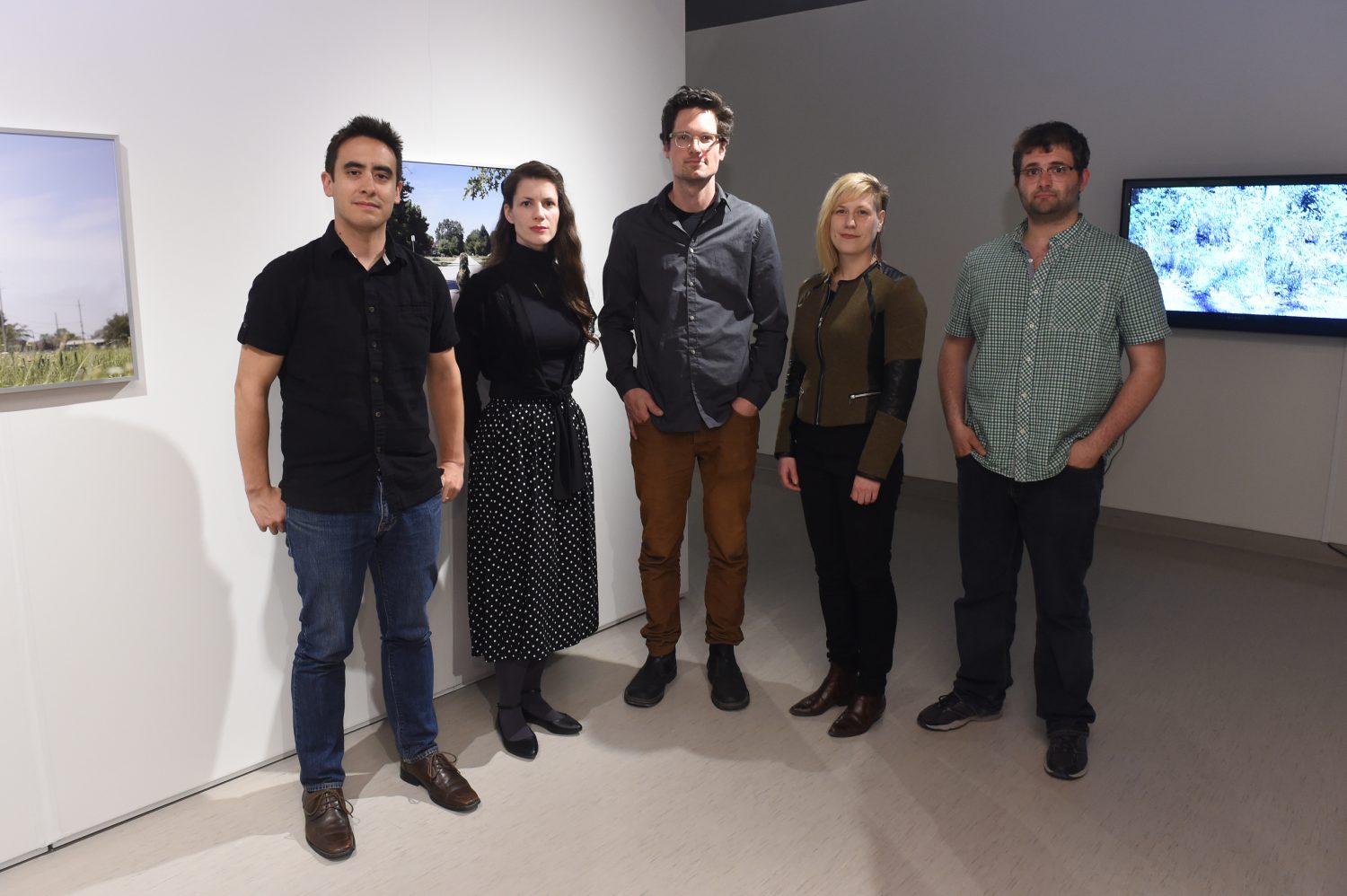BioART: Collaborating with Life
Exhibition at Karsh-Masson Gallery, Ottawa
Curated by Jennifer Willet, in partnership with Artengine (Ottawa), Incubator Art Lab (Windsor), and the National Art Centre’s Ontario Scene
Installation design by Michael Davidge
https://nac-cna.ca/en/event/11459
There has always been a deep connection between the human artistic impulse and what is seen and experienced in the natural world. Arguably, aesthetics and notions of beauty and representation originate from human / environment / species interactions through a long history of cave paintings, ceremonial acts, culinary practices, sublime landscapes, and more recently biological arts. Human aesthetic desires are also manifest in our biological environment through behaviours not conceived of as creative; natural selection, cultivation, companionship and consumption activities of Homo Sapiens sculpt the landscape and determine the reproductive successes and failures of different plants, animals, and our own species.
This exhibition explores complex collaborations between human artists and other life forms towards the production of cultural expressions that explore the ecological, economic, technological, and spiritual relations possible between species in a new field called bioart. Bioart is art that uses biological media (cells, microbes, plants, and by some definitions bodies - human and otherwise) in the production of art. Bioart intrinsically involves a complex engagement in bioethics resulting form the manipulation of life towards human / cultural ends.
BioART: Collaborating with Life embraces biological techniques throughout human history as media art including: lab based biological sciences, living architecture, cooking, ecological art, and body art. The wide range of 'bioart' practices presented is intentional. Perspectives range from feminist, post-colonial, to DIY bio, and tech savvy interpretations of our shared biotechnological future. The goal is to allow the viewer to read all of these practices as entwined within human technological history. Specific to the Ontario Scene programming, this exhibition serves to highlight Canadian (Ontario) based practices that engage directly .
Karen Abel is a Canadian artist and naturalist based in Toronto. She creates site-sensitive installation and public art works that consider, engage and accommodate 21st century urban ecology and biodiversity with emphasis on domestic spaces and daily-lived interactions with life processes. We have invited Abel to exhibit a piece called Hibernaculum, a chandelier adorned with hand made crystals out of sugar, and painted with a patina of sea salt and apple cider. http://www.karenabel.ca
Related to visibility, survival and belonging, Alana Bartol’s Forms of Awareness: Ghillie Suit, is a series of performances that reveals and examines the complex relationships and patterns of violence in our engagements with the land, ecology and each other. In this work Bartol fashions a ghillie suit (a military camouflage costume) with collected grasses, twigs, and leaves from the local ecology. Wearing this garment (typically seen as belonging to male sniper solders) she lurks in urban landscapes, interacting with land formations, urban design elements, and people exposing only her bare feet and painted pink toenails to audiences. Bartol will contribute a live performance, as well as digital photo / video documentation to the exhibition.
http://alanabartol.com/home.html
Phillip Beesley‘s architectural / art works contemplate the ability of an environment to be near-living, to stimulate intimate evocations of compassion with viewers through artificial intelligence, minute biological and chemical reactions, and mechanical empathy. The conceptual roots of this work lie in 'hylozoism', the ancient belief that all matter has life. Beesley’s works are often very large immersive robotic environments. Though his larger works are beyond the scope of this group exhibition, we have requested a smaller prototype and possibly video documentation for installation in the gallery space.
http://www.philipbeesleyarchitect.com/
Cass Gardiner filmmaker, The Edible Indian (2013) is a short glimpse into the long history of food and it's role on indigenous identity. Memories, rights of passage, and the spirituality of three First Nation's chefs as woven together as they cook. While re-creating their favorite meal, each chef paints a portrait of how what ends up on the plate tells a story of who they are, and where First Nation's people are headed in the 21st century.
https://cassgardiner.com/
Robert Hengeveld’s work is a fantastical amplification of technology’s use in the everyday. He examines how this technology (communications, chemical, genetic) is used to control the environments we inhabit; as a means of making things more convenient, more comfortable, more aesthetic. The work reflects the reality of our culture’s interest in controlling and shaping the natural environments around us. We have invited Hengeveld to exhibit Kentucky Perfect, a complicated machine that houses and maintains a very small patch of the ideal lawn live in the gallery.
http://roberthengeveld.com/projects/kentucky-perfect/
Andrew Pelling an artist and scientist, runs the The Pelling Lab for Biophysical Manipulation, an exploratory space at the University of Ottawa dedicated to understanding the limits of living systems. The lab is composed of a diverse group of experimentalists open to the possibilities that occur at the interface between disciplines. By pushing living systems to artificial limits the lab has discovered surprising behaviours and an astonishing ability of cells to adapt and respond to unusual stimuli. We will host a work called Re-Purposed a collaboration between Craig Bryan, Daniel Modulevsky and Andrew Pelling a series of preserved apple slices that have been co-with HeLa Cells, HFF Cells, MDCK Cells.
http://www.pellinglab.net/
Chef Johl Ringuette of "Nishdish" is a culinary artist who provides audiences with the opportunity to partake in contemporary cuisine inspired by indiginious recipes, including all locally sourced ingredients through traditional methods. For the Anishnawbe, food is not without ceremony, and conscious deliberation brings more than optimal health. Food is the most basic way to share, support each other, and inspire learning. We have invited Ringuette to cater the opening of the exhibition, and to install a video document of his catering company for the duration of the exhibit.
https://www.nishdish.com/
Jennifer Willet’s work resides at the intersection of art and science, and explores notions of representation, the body, ecologies, and interspecies interrelations in the biotechnological field. In 2009 she opened the first biological art lab in Canada, called INCUBATOR: Hybrid Laboratory at the Intersection of Art, Science, and Ecology at the University of Windsor. Willet will exhibit selected objects from her NATURAL SCIENCE Collection of items distilled from her 2011 BioARTCAMP project in Banff National Park. Lab specimens, natural artifacts, and cultural artifacts combine to create new taxonomies of life in sculptural objects like the Conjoined Jack Rabbit Microscope Twins, and the Owl Night Light.
Image Credits:
01-05
BioART: Collaborating with Life exhibition
Karsh-Masson Gallery, Ottawa, Canada
as part of the National Arts Centre, Ontario Scene Festival
2015
Photo: Karsh-Masson Gallery

